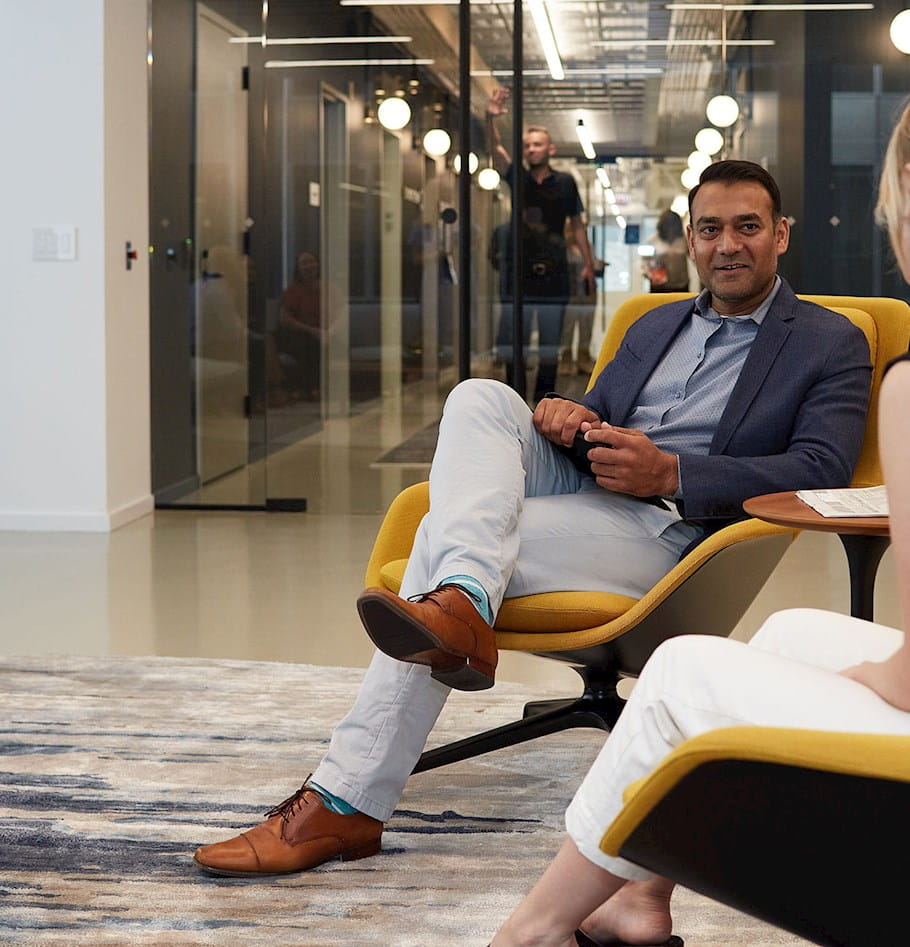‘Speak Up, But Don’t Be Over-Assertive’: Dealing With the Likeability Bias in the Workplace
Eric Chi and Shannon Donald spoke with Fairy God Boss about likeability bias in the workplace
Have you heard about the likeability bias (aka the likeability trap)? This term refers to a cultural and historical bias where “we let our expectations of what women and men are ‘supposed to be' change our perception of women and men in identical scenarios,” shares Eric Chi, a Director in West Monroe’s Technology Practice.
According to the likeability bias, men are expected to be assertive, and women expected to be kind and communal. And, as Shannon Donald, a Director of Operations Excellence at West Monroe shares, the “likeability bias reinforces behavior that models, and typically favors, the majority group of an organization.”
In a work setting, this means that, “if someone assertively takes control of a meeting, a man may be perceived as ‘the boss,’ but a woman doing the same thing may be perceived as ‘bossy,’ Eric tells us. As a result, Shannon says that the likeability bias “influences decision-making, impacts career opportunities and is an often unspoken but inherent part of organizational culture.” Therefore, Eric notes these biased perceptions can lead to inequality in the workplace.
So, what can we do as individuals and as companies to combat the likeability bias? We reached out to Eric and Shannon who have led presentations on likeability bias for their colleagues at West Monroe to learn more about this bias and their own experiences.
Have you experienced likeability bias?
Eric: I’ve witnessed women get passed over for specific project assignments or business development opportunities because they were perceived as either too nice or too aggressive, which aren’t words used to describe their male counterparts. I’ve also had female and male clients provide the same feedback, but noticed that the woman was perceived as ‘unfair’, while the man was simply perceived as ‘tough’.
For me, personally, as an Asian American, we’re generally stereotyped to be complicit and non-confrontational, so I’m all too familiar with the feeling of being seen as a team player instead of a leader.
Shannon: As a woman in the workplace, the likeability bias is difficult to avoid.
It’s walking a fine line between being told to speak up more while not being seen as over-assertive; it’s demonstrating vulnerability but not being overly emotional in the workplace; it’s not automatically taking on admin tasks like notetaking but wait…Shannon, did you take notes? ”
Personally, I have been fortunate to have male leaders reach out when they’re in doubt if they’re exhibiting bias and be receptive when it’s brought to their attention.
Why is it important for workplaces to address likeability bias?
Eric: It is important because this is an archaic and unfair way of perceiving women — women are penalized for being assertive and for being likable. If they are assertive, they may be seen as less likable and may not be promoted. If they are likable, then they may be seen as agreeable and someone less fit to be a leader.
To change the likeability bias, everyone must play a part. Women should have a support network that’s beyond just other women. They should have peers, direct reports, and managers who listen, support, and advocate for them early and often.
Shannon: Having a more diverse workforce is imperative to remaining competitive within today’s talent pool. From a hiring perspective, especially over the last few years, interview candidates consistently ask what our company’s Inclusion & Diversity approach is.
And, from a retention perspective, it’s apparent when certain personas or groups of individuals are consistently awarded opportunities for advancement, while others face a longer path, which tends to lead to a loss of talent.
Essentially, hiring and retaining talent directly correlates to investing in a more inclusive workplace. If bottom-line impact is what it takes for an organization to invest in addressing likeability bias, then there’s a clear case to be made in the high and growing cost of employee acquisition and turnover.
What do you do in your day-to-day life to address likeability bias?
Eric: I involve women in leadership opportunities whenever I can and encourage my peers, superiors, and advisees to do the same.
Ever since having advisees, I’ve always pushed to be a mentor for women. I also make sure to speak up if I observe something, whether it’s stopping someone from interrupting a female colleague, correcting a biased perception, or asking a female colleague to contribute to a conversation.
”
Shannon: When forming a team or delegating tasks, I pause to internally challenge the people who immediately come to mind to reach out to. It’s important to intentionally vary who I engage with rather than involving someone because I’m familiar with their way of working.
This is also a big focus of mine when conducting interviews. While there are people you form a quicker camaraderie with, it’s important to separate that “gut feeling” from an objective point of view on someone’s skills and background.
I also challenge when biased language is used to describe an employee. From a gender perspective, women may be expected to be less assertive than males — it’s taken as being “bossy,” whereas men are “demonstrating leadership”. Candidly, this isn’t something I’ve always felt comfortable doing. It has taken time and is very much a work-in-progress to identify when likeability bias is being demonstrated and course correct in the moment or shortly thereafter. This is a hard muscle to build and one I’m still growing. But, I can’t improve on it if I don’t practice!
How can workplaces do their part to address likeability bias? What are some tactical steps?
Eric: Start somewhere but ensure you keep progressing. Employers might do a town hall on this topic once, pat themselves on the back and then forget about it for a few years. That’s not enough to promote long-lasting change.
A series of events or corporate outreaches are much more impactful throughout the year. A few examples are an email that defines likeability bias with a link to a TED talk, a book-of-the-month recommendation, small workshop groups, and instructor-led trainings. Leadership must also be fully bought in and provide coaching for management. Employers should allocate dedicated time to give their employees ample opportunities to learn.
Shannon: First, introduce a required bias awareness training across leadership and allow opt-in across other levels. This includes scenarios of common likeability bias scenarios based on specified levels. We offer this at West Monroe which has been well-received and helps normalize acknowledging bias in our day-to-day. Employers should also challenge signs of likeability bias within the hiring processes and provide a safe forum where employees can share anonymous experiences with likeability bias.
Specifically, what is West Monroe doing to address likeability bias? How have you or others benefited from their work in this area?
Eric: West Monroe has a Women’s Leadership Network employee resource group that hosts an ongoing series of workshops called, “Developing Workplace Allies.” These workshops focus on workplace biases such as likeability bias. They clearly define the bias, provide actionable steps to address it, share colleagues' stories, and allow us to speak with our colleagues in small groups. Our leadership attends these sessions and encourages everyone at all levels to participate.
By exposing the whole firm to it, it has allowed me to more easily have candid conversations with my team about bias and has encouraged constructive discussions.
Shannon: At West Monroe, we have a training series called Unconscious Bias, which all leaders are required to take and is offered broadly within the organization. We also offer annual bias trainings across different areas of bias, including likeability, affinity, maternal and more.
”
As a digital services firm, we operate on project-based work. We have centralized our staffing role, which has made strides toward making staffing decisions based on objective data rather than who knows who.
What can other companies learn from how West Monroe addresses the likeability bias?
Eric: West Monroe went in with a purpose — our people defined a vision, made investments, and constantly sought feedback to improve. My wife was listening to one of the likeability bias workshops I was helping facilitate (the side effects of a work-from-home COVID-19 world), and she couldn’t believe that West Monroe was so candid when talking about bias. She was amazed that we shared our own individual stories and couldn’t imagine her work ever having these types of honest and open discussions. She became a frequent listener of our workplace allies series, and it not only educated her on the different biases but she felt empowered to address these at her own workplace. I was incredibly happy to share this with her and felt lucky that West Monroe had invested so much in this.
Shannon: Empower employee groups to ideate on steps to address likeability bias. Then, actually put their plans into action and back them with the appropriate funding and sponsors at the leadership level. Companies should also evaluate internal processes through the lens of likeability bias — ideally bringing in a third party rather than solely relying on self-reflection.
Lastly, organizations can create a forum through which employees feel safe to share their experiences with likeability bias — utilizing anonymous information-gathering, storytelling and rolling up themes to share with leadership to ultimately enact change.
This article originally appeared on Fairygodboss.com.

